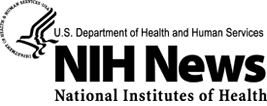Last updated: November 14, 2013
2013 Release First Director Named For Nhgris New Division Of Genomics And Society
National Human Genome Research Institute
www.genome.gov
First director named for NHGRI's new Division of Genomics and Society
Lawrence Brody, Ph.D. selected to lead new division that includes ELSI research program
Dr. Brody's expertise and interests are wide-ranging, from human genetics and genomics to the public understanding of science. As a bench scientist, he played an instrumental role in early and important discoveries about the BRCA1 gene, which is responsible for a hereditary form of breast cancer. His research efforts have regularly included studying the practical implications of genomic advances. For example, Dr. Brody was a co-architect of the NHGRI Multiplex Initiative, an innovative project that aimed to better understand how the general public comprehends and reacts to personal genetic testing results.
Dr. Brody has also invested a considerable amount of his professional efforts to addressing the broader societal issues relevant to contemporary genomics research. He has worked on several projects related to genomics, society, and minority populations and, most recently, he served as a key developer of the public exhibition, "Genome: Unlocking Life's Code," which opened in June at the Smithsonian Institution's National Museum of Natural History. Moreover, on multiple occasions, he worked closely with the U.S. Solicitor General in the drafting and editing of legal briefs and in the preparation of oral arguments for the gene patenting case that went before the U.S. Supreme Court earlier this year.
"Dr. Brody brings an extraordinary and diverse body of accomplishments and expertise to lead this newly created division," said NHGRI Director Eric D. Green, M.D., Ph.D. "His perspective as a bench scientist combined with a demonstrated long-term interest in the intersection of science and society makes him uniquely qualified to lead this critical part of NHGRI's research program."
The Division of Genomics and Society was established in 2012 as part of an institute-wide reorganization. It is one of four divisions that make up the institute's extramural research program. This new division is now responsible for an expanded program related to the many societal issues relevant to genomics research and genomic advances, incorporating and extending the activities of NHGRI's Ethical, Legal and Social Implications (ELSI) research program. The latter was established in 1990 as part of the Human Genome Project and aims to pursue multidisciplinary research and training designed to explore the impact of genomics on society.
"It is an exciting time for genetics and genomics, but with that comes the responsibility to examine and address the many important societal implications of these research advances. With improvements in technology as the driving force, genomics can increasingly be used in clinical settings in a way that was simply not possible a decade ago," Dr. Brody said. "Because genomics is moving closer to our daily lives, we need to better understand its societal impact. Issues such as consent, privacy, and access to genomic information will continue to grow in importance. We need to increasingly pursue research to understand these issues and to engage relevant stakeholders, including the general public, in the discussions."
Several large NHGRI programs incorporate elements of ELSI research into their studies, including the Clinical Sequencing Exploratory Research program, the Implementing Genomics into Clinical Practice Network, and the Genomic Sequencing and Newborn Screening Disorders program. Dr. Brody would like to eventually see similar ELSI research programs be implemented by other institutes and centers across NIH. He also sees several related areas for potential research focus, including exploring a legal framework for genetic/genomic testing and examining how advances in genomic technologies affect the economics of medical practice.
Dr. Brody received a B.S. in biology from Pennsylvania State University, University Park, in 1982, and a Ph.D. in human genetics from Johns Hopkins University, Baltimore, in 1991. He was a Howard Hughes Medical Institute (HHMI) Research Associate from 1990 to 1993 and an HHMI postdoctoral fellow at Johns Hopkins University and the University of Michigan, Ann Arbor, during that time. He joined NHGRI in 1993 as a senior staff fellow, and became senior investigator and head of the Molecular Pathogenesis Section in the Genome Technology Branch in 2001. Dr. Brody has been chief of that branch since 2010, and the chief scientific officer at the trans-NIH Center for Inherited Disease Research since 2006.
A high-resolution photograph of Dr. Brody is available.
NHGRI is one of the 27 institutes and centers at the National Institutes of Health. The NHGRI Extramural Research Program supports grants for research and training and career development at sites nationwide. Additional information about NHGRI can be found at www.genome.gov.
National Institutes of Health (NIH): NIH, the nation's medical research agency, includes 27 institutes and centers and is a component of the U.S. Department of Health and Human Services. NIH is the primary federal agency conducting and supporting basic, clinical, and translational medical research, and is investigating the causes, treatments, and cures for both common and rare diseases. For more information about NIH and its programs, visit www.nih.gov.
Contact:
NHGRI Communications
John Daniels
(301) 402-0911


